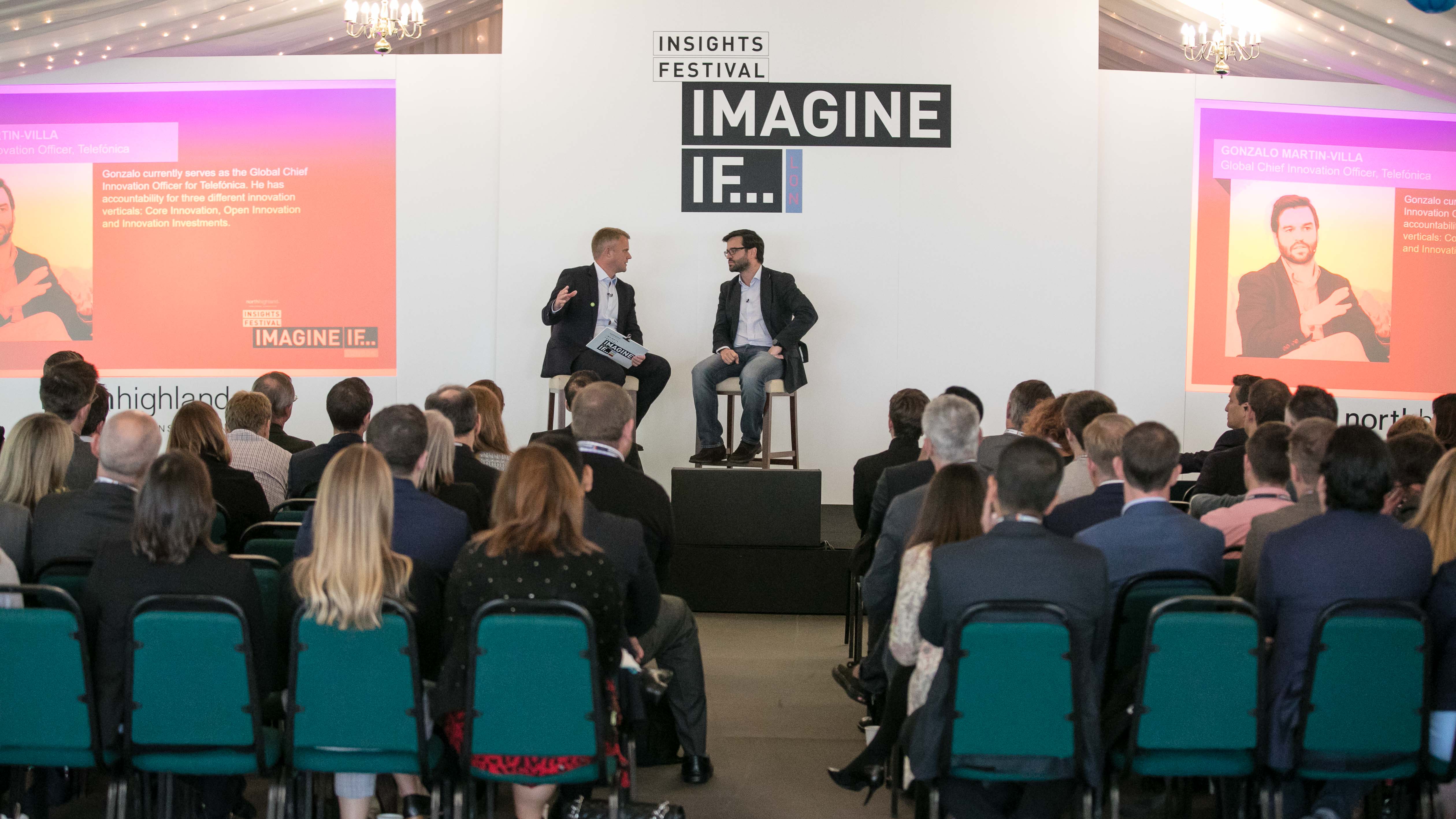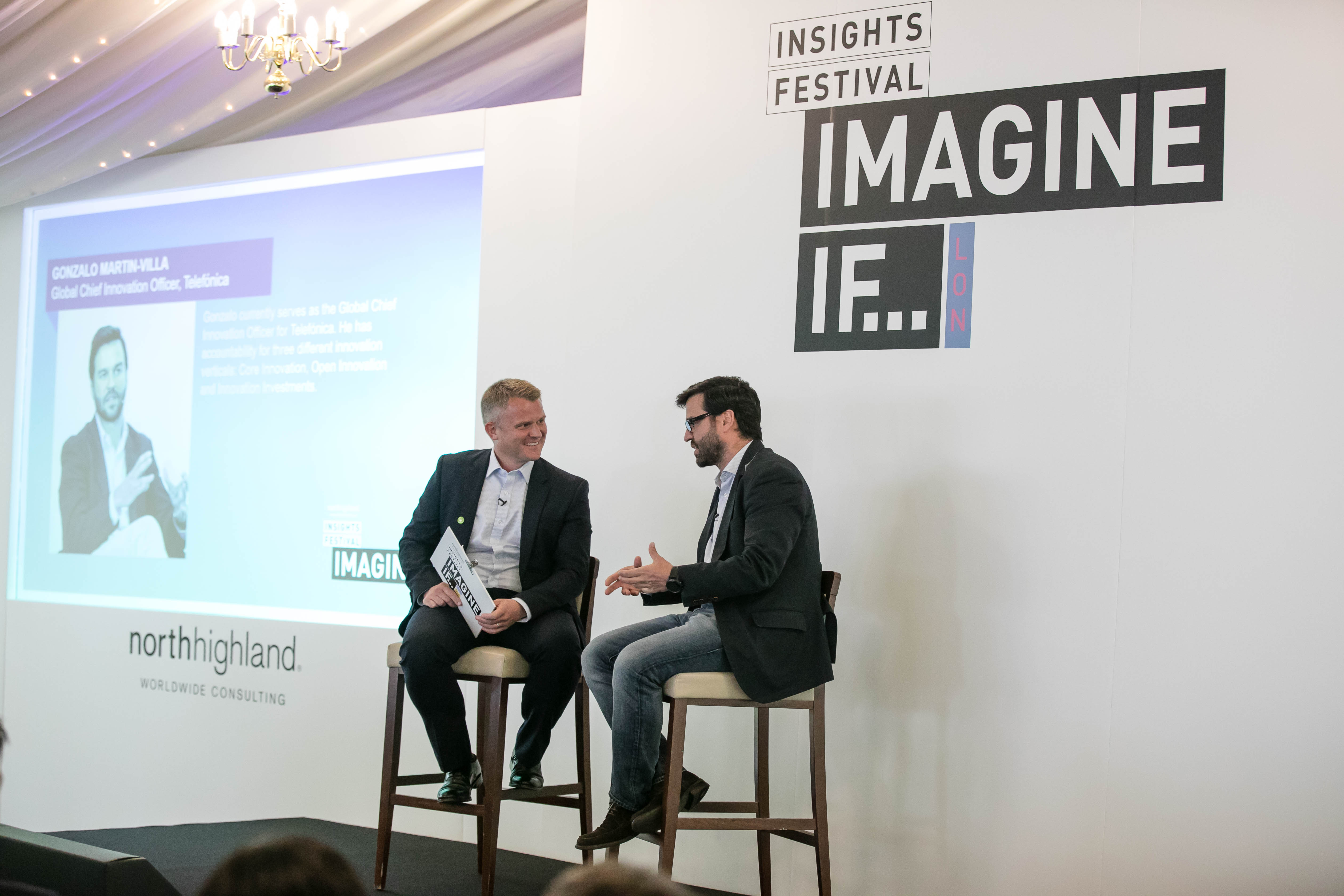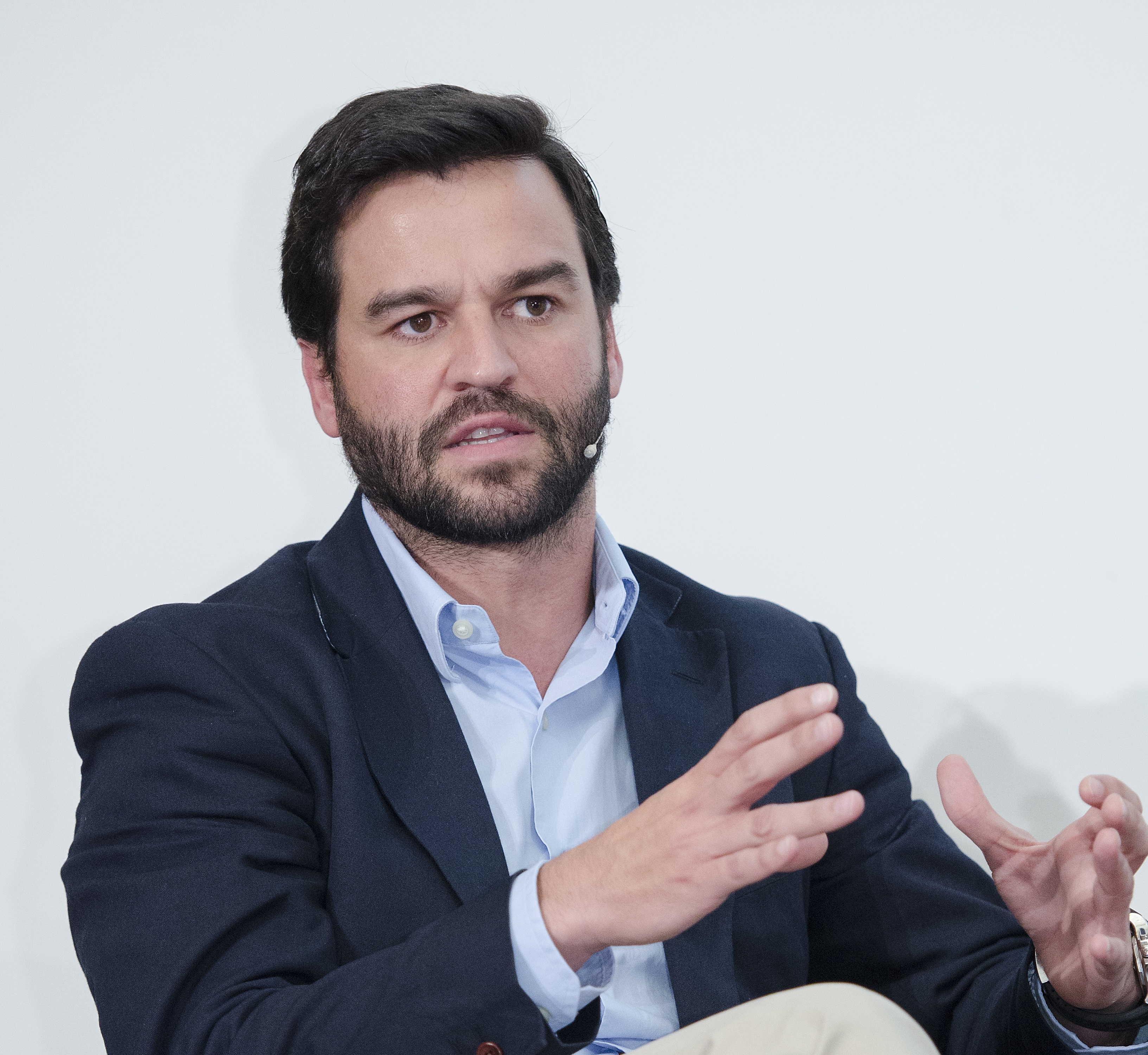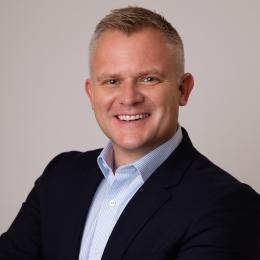To understand the future of the Internet of Things (IoT) ecosystem, we analysed several key market trends. Then, we shared them with Gonzalo Martin-Villa, IoT and Big Data Director at Telefónica Tech, to get his perspective on what the future holds. Together, we uncovered a few dominant themes:
- Telco operators can transform into IoT champions.
- The COVID-19 pandemic continues to drive the need for digitisation through IoT.
- There are significant opportunities for IoT growth. Three industries hold the key.
- The IoT ecosystem's greatest enablers have the potential to be the most significant barriers to entry.
Telco operators can transform into IoT champions.
The IoT ecosystem is fragmented. There isn't a single player that can rely solely on its own capabilities to service customers across the entire value chain, so collaboration is critical to success.
High-tech companies or hyper-scalers like AWS, Microsoft, and Google are best-equipped to integrate all services in the IoT value chain, including:
- Devices
- Platforms
- Analytics and BI
- Connectivity, either by partnering with Communication Service Providers (CSPs) or by becoming a Mobile Virtual Network Operator (MVNO)
Yet telco operators are also poised to become IoT champions. They’re in a strong spot because they can align numerous technology ecosystems, deliver operational excellence, and prioritise customer service. Also, these companies can leverage the scale of their network and their capital strength, both critical assets in the IoT ecosystem.
From devices and platforms to IoT consulting, integration, and analytics, companies like Telefónica have significant internal capabilities and the geographic reach to scale their IoT solutions and offerings.
However, IoT leadership also requires adaptation to meet market demand. Gonzalo Martin-Villa's insights reinforce this imperative:
"At Telefónica, we are constantly adapting our offering towards the necessities of our customers, and building collaboration models from our core asset, connectivity, to maintain our position as market-leaders in IoT."
Telefónica demonstrates that telco operators have more to offer the market than connectivity.
Having been a significant player in the IoT ecosystem for many years, Telefónica focused its investments into Security, Cloud, IoT, and Big Data in 2019 by creating Telefónica Tech. The company predicts that the new business unit will generate more than €2bn in new revenues by 2022, signalling significant growth potential in the IoT ecosystem.
They have cemented their position as leaders in the ecosystem by combining the power of IoT, Big Data, and AI to create what they call the "Intelligence of Things." It provides three core offerings to customers:
- Adaptability: serves up modular end-to-end products and services in a scalable way
- Excellence in Execution: includes more than 500 IoT experts, working with some of the best-in-class global providers
- Unique Assets: dedicated IoT networks including 5G, private networks, NBIoT, or LTE-M. All unique insights are extracted from Telefónica's proprietary data.
Gonzalo Martin-Villa shared that this comprehensive end-to-end portfolio tailored to the specific needs of each customer "allows [Telefónica] to transform the data captured by IoT devices and sensors into valuable information and solutions for our customers."

The COVID-19 pandemic continues to drive the need for digitisation through IoT.
Without a doubt, COVID-19 impacted every sector. When it comes to technology and digital services, the pandemic’s implications depend on each company's respective recovery journey.
Horizon one: Crisis response
In the immediate aftermath of the pandemic, most sectors slowed activity significantly given high levels of uncertainty. As a result, most IoT and Big Data projects slowed too as customers scrambled to find stability and shape their immediate crisis response.
Horizon two: Proactive and prepared response
Many private and public sector organisations will be much more conservative with their spending in the face of a potentially significant economic downturn, in turn, impacting their investment in new technologies.
The short-term shocks will be more significant in automotive, oil, and gas (due to lower demand and commodity price crash), manufacturing, hospitality, and retail.
National and regional lockdowns—and the resulting cancellation of outdoor events—will limit the sale of IoT devices such as beacons, proximity sensors, and digital signage.
Horizon three: Strategic readiness
The mid-to-long-term trajectory looks more optimistic. Declining economic activity has sparked a demand for solutions that accelerate sales after confinement. Companies are looking to capture more data from their customers to improve their products and services.
Big Data and AI can help companies predict end customers' behavior, habits, and trends. The result? Increased demand for digital solutions, particularly those relying on the cloud.
Gonzalo Martin-Villa's insights support this trend: "IoT and Big Data are key levers in the Digital Transformation of companies, and Covid-19 is driving the need for digitalisation in all areas of society."
Considerations for new IoT players
To be successful in the IoT ecosystem, new entrants need to consider where they have a right to play. More importantly, they'll need a clear perspective on how they can win.
Leaders leaping into IoT should ask a few critical questions:
- Why is our offering unique?
- What is our go-to-market strategy?
- How can we bring our people on the journey?
Why is our offering unique?
IoT has given rise to new business models due to the granularity of data now available. New players need a clear view of how to capture more value from these new business models. They should also present a unique offering to new or existing clients.
As the ecosystem develops, the hyper-scalers capture more of the IoT value chain, stifling new entrants' ability to compete in the market. New entrants should assess value chain fragmentation, identify their customer need, and build a robust solution that answers their problem.
Players need to be able to deliver this offering alone. As Gonzalo Martin-Villa attests: "To succeed in the IoT ecosystem, you need to have a unique value proposition that you can deliver to market."
How will we go to market?
IoT is about more than technological innovation. It's about considering creative options to bring your product to market. As new players enter the ecosystem, consider options that diversify your client base or provide novel services to existing clients.
Gonzalo Martin-Villa's experience on Telefónica's journey reinforces this guidance:
"We entered into the IoT ecosystem through the most natural point for us - connectivity, but we didn't want to be anchored to this part of the value chain. We transformed our operating model and expanded to create a vertically integrated business model, providing more solutions for our customers.
Now, we have a unique value proposition that covers the E2E of the IoT value chain, from devices, and connectivity, to seamless integration with hyper-scalers, integration for complex projects and Big Data, accompanying our clients in their digital transformation process."
Understanding customer needs, while critical to success, is only part of the story. To be genuinely successful, new players need to adapt their operating model to diversify their services set.
How can we bring our people on the journey?
The answer starts with three considerations: leadership, talent profile, and ways of working.
Leadership: Every successful transformation starts at the top. The leadership team must align behind desired outcomes to drive meaningful change across the business.
Blended talent profile: Adaptation and flexibility are fundamental skills when building an IoT product. Your organisation needs a blended mix of digital genius and business acumen: "Ideas developed by technical professionals with no business savvy are usually as hard to realise as ideas from business professionals with no technical background."
Ways of working: To propel innovation, ways of working must transform, too. This transformation requires a "fail fast, fail often" mindset. In transitioning into IoT, embracing more agile ways of working can be a hurdle for those that lack a start-up mindset.
Gonzalo Martin-Villa reiterates the importance of ways of working: "Innovation takes time, and you need to account for failures along the way."

There are significant opportunities for IoT growth, and three industries hold the key.
The mobility, industry and utilities sectors are well-positioned for growth in IoT:
Mobility:
Leading car manufacturers are producing connected vehicles that allow them to track data at any time, meaning embedded IoT systems are already commonplace in the manufacturing process. There is a growing demand for devices, sensors, and analytics platforms that support fleet management and asset tracking.
"We see significant opportunity in mobility as few players are able to offer a truly end-to-end solution to their customers. At Telefónica, we are focused on providing our customers cutting-edge solutions to capture the opportunity in the mobility sector, and we keep developing E2E solutions that will transform the future of mobility. 5G means that the connected vehicle, V2X is going to become faster and more reliable; we have the right to play to capture this opportunity." – Gonzalo Martin-Villa
Industrial:
The industrial IoT market is not a new phenomenon, and the market is saturated with players who are well established in this sector. Yet, significant growth opportunity remains. Edge IoT and private networks are two of the most in-demand solutions in the industrial sector. And for a good reason: they hold the promise of fewer manufacturing failures and optimised production costs.
As a result, we've seen a surge of investment into sensors and predictive maintenance technologies, due in part to their versatility across a range of sectors.
Telefónica are an example of a telco adapting its service offerings to capitalise on industrial growth: "Our teams have developed industry-specific products and services using P-LTE and 5G to optimise efficiencies in factories. Drawing on technology that we use internally within Telefónica, we have created predictive maintenance and automation solutions through Machine Learning and AI." – Gonzalo Martin-Villa
Utilities:
Utilities are ripe for IoT transformation. There's tremendous cost-saving potential across electricity, gas, and water management by deploying sensors and beacons that can monitor and predict maintenance requirements for equipment out in the field. The digitalisation of utilities improves operational efficiencies and can power new business models. It also creates access to a new customer base. The team at Telefónica have developed solutions that can provide this insight and are "working in several countries to provide E2E services from the proposal definition up to the operation service."
Unsurprisingly, healthcare is the industry with the most promising prospects for growth as a result of COVID-19. There has been a significant demand for telemedicine, patient tracking, and remote monitoring solutions, transforming how we interact with healthcare providers worldwide.
Gonzalo Martin-Villa agrees, claiming that "healthcare is on track to be an area ripe for growth given that there are only a handful of players operating in this space."
So, what does the future hold for the IoT ecosystem?
The global IoT market's value is anticipated to grow to $248 billion by the end of 2020 and to $1.5 trillion by the end of 2025. The biggest accelerator for this growth? The advent of 5G networks.
5G has expanded wireless internet connectivity and IoT capabilities. It has provided for improved security and network traffic, faster responses, and reliable data transferring.
Gonzalo Martin-Villa confirms that, as a result of this shift in network capability, "we're seeing significant investment in IoT from high-tech companies who are anticipating increased demand from the market."
However, 5G requires a hefty investment on the part of telco operators. After all, it's an expensive technology for IoT players to access and run. To win in IoT, companies need to sustain a rapid pace of innovation. They can't wait for the networks to unlock opportunities: 5G must enable the IoT ecosystem, not the other way around.
5G has given rise to a new set of players, all developing different technologies and software. And customers are demanding a more integrated IoT ecosystem. In other words, consolidation is on track to be a major trend across IoT.
Partnerships, alliances, or collaboration models—enabling companies to transform their offerings—can help companies adapt. This approach allows them to move across the pillars of the value chain, from devices, connectivity networks, and managed connectivity platforms, to professional services, consulting, Big Data, and AI.
Customers are also demanding expanded geographical services to support global operations. For IoT players with an established worldwide footprint, this is a unique point of difference, allowing them to seamlessly serve their international customers.
Our research, supported by Gonzalo Martin-Villa's insights, suggests that while the IoT ecosystem will continue to grow exponentially, competing in this saturated market requires the right strategy, organisational structure, and people to drive meaningful success.
About Gonzalo Martin-Villa
Director of Telefónica IoT & Big Data Tech

Gonzalo Martin-Villa, former Chief Innovation Officer for Telefónica, now leads IoT and Big Data for Telefónica Tech globally.
He also founded and became the CEO of Wayra, the world's largest start-up accelerator programme. Wayra now has operations across 11 hubs in both Europe and LATAM and a portfolio of >300 start-ups. He was voted by innovation experts into Wired Magazine's Top 100 European Digital Influencers.
Gonzalo has a degree in Law by the Universidad Complutense de Madrid, an LLM by Georgetown University, and also holds an MBA from IESE Business School – University of Navarra.
